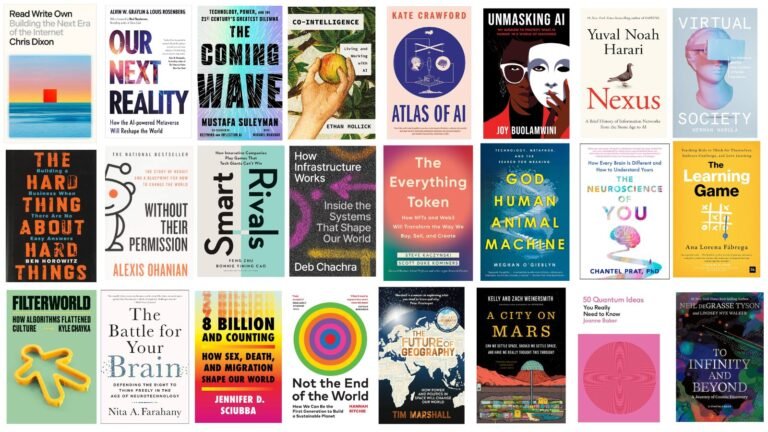The GPT‑5 Revolution: Advancements, Real‑World Impact, and What’s Next for AI
What if your AI could reason through multi‑step problems, switch from code to images to audio without breaking stride, and coordinate tools like a helpful teammate? That’s the promise many people bundle into one phrase: the “GPT‑5 revolution.” The idea isn’t just a faster chatbot—it’s a shift toward AI that thinks and acts more like an assistant who can plan, justify, and deliver results in context.
If you’re a developer, founder, or curious practitioner, you don’t need hype—you need clarity. In this guide, I’ll unpack what GPT‑5 is likely to mean (and what it won’t), how it could change work across software, education, marketing, and healthcare, and the practical steps to prepare your stack. I’ll also share real‑world tips, benchmarks to watch, and a balanced view of safety and governance so you can move fast—and responsibly.
What We Mean by “GPT‑5”
Let’s start with a quick reality check. As of now, OpenAI has not publicly released a model called “GPT‑5.” Instead, we’re seeing rapid iterations of frontier‑class models, such as GPT‑4 and the multimodal GPT‑4o, that push toward real‑time reasoning and tool use. If you’ve used GPT‑4o, you’ve seen the trajectory: faster responses, integrated audio‑vision‑text, and more natural interactions. You can read OpenAI’s write‑up on GPT‑4o to see how multimodality has evolved so far: Hello GPT‑4o.
So why talk about GPT‑5? In practice, people use “GPT‑5” as shorthand for the next leap: higher‑accuracy reasoning, richer memory, smoother tool orchestration, and stronger safety layers. Think of it as a label for the near‑future capabilities that continue where GPT‑4o and other advanced models leave off. It’s a useful frame for planning—even if the official name ends up different.
Here’s why that matters: whether it’s called GPT‑5 or not, the core advances we expect are clear. The direction of travel is consistent—more reasoning, more modalities, more reliability—guided by both industry collaboration and policy focus on safety. If you care about readiness, look at the trend lines, not just the branding.
The Big Leap: Reasoning, Speed, and Multimodality
The GPT‑5 conversation starts with three pillars: smarter reasoning, better performance, and seamless multimodality. Let me break each down.
1) Reasoning that plans, not just predicts
Current large language models excel at pattern matching. The next wave aims to plan across steps, explain choices, and use external tools when needed. This draws on research like ReAct (reasoning + acting) and tool‑use frameworks that let models call APIs, search, query databases, or run code mid‑conversation for higher reliability. For a conceptual grounding, see the ReAct paper: ReAct: Synergizing Reasoning and Acting.
What this looks like in practice: – Multi‑step problem solving: Fuse domain knowledge, code execution, and retrieval to reach an answer. – Transparent chains of thought (internally), with summaries and citations for users. – Task decomposition: The model proposes a plan, executes steps, and verifies results before returning a final answer.
Why it matters: Reasoning reduces “confident wrong” answers and drives better outcomes for coding, analytics, product ops, and research.
Curious to go deeper and get a practical guide? Shop on Amazon for the book that inspired this overview.
2) Speed, memory, and context that feel real‑time
Speed unlocks new UX. When a model responds in under a second, it becomes a live collaborator. Expect: – Larger and smarter context windows that keep long projects “in mind.” – Faster first‑token latency for fluid, voice‑like dialog. – Memory features that retain preferences while respecting privacy controls.
Memory is the difference between “answer a question” and “work with me across a week‑long sprint.” It’s also key to personalization—while staying compliant with data governance.
3) Multimodal by default
GPT‑4o previewed this future: text, voice, and vision in one model. Next‑gen systems will make multimodal native rather than a bolt‑on: – Vision to understand diagrams, dashboards, and screenshots. – Audio to transcribe, translate, and maintain context in meetings. – Image and video generation with tighter factual controls.
The result is an assistant that can “see” your screen, “hear” a call, parse an API response, and write code to fix an error—all in one flow. This is a qualitative shift in how we use AI, not just a quantitative upgrade.
GPT‑5 vs. GPT‑4: What Will Actually Change?
Think of GPT‑5 (again, as a concept) as moving from “smart autocomplete” to “context‑aware solver.” Here are the deltas most teams care about:
- Accuracy: Fewer hallucinations on niche topics; better calibration and citation.
- Tool use: Smarter selection and sequencing of tools, with more robust fallback behavior.
- Autonomy: Safe micro‑autonomy for tasks like triage, enrichment, and summarization at scale.
- Consistency: Less variability across sessions; more deterministic outputs when needed.
- Controls: Better moderation, red‑teaming, and policy support built into the stack.
The key difference is reliability under pressure: high‑stakes use cases (healthcare triage support, financial analysis, legal drafting assistance) demand predictable performance and tight guardrails.
Want to try it yourself and see how these workflows translate to real projects? Check it on Amazon and follow along.
Use Cases: How the Next GPT Wave Changes Work
Now let’s make it concrete. Below are the fields where the jump from GPT‑4 to a “GPT‑5‑class” model will feel biggest.
GPT‑5 for developers and software teams
What it means: – Code generation with stronger reasoning: fewer brittle snippets, more runnable solutions. – Resolver bots: detect, reproduce, and propose fixes to bugs by running tests and reading logs. – Infra copilots: suggest cost‑savings, identify security misconfigurations, and generate IaC.
Practical wins: – PR assistants that annotate diffs with clear rationale and risk flags. – Test authoring that adapts to your stack and coverage gaps. – Data pipeline monitors that detect schema drift and repair jobs.
Tip: Treat the model like a junior engineer with superpowers—great at brute force, decent at pattern matching, and much better with clear specs and unit tests.
GPT‑5 for content creation and marketing
What it means: – Strategy‑aware generation: content mapped to persona, funnel stage, and channel. – Asset orchestration: turn one research piece into blog, social, email, video, and visuals. – Brand safety: consistent tone, claim verification, and inline citation prompts.
Practical wins: – SEO content that’s designed around search intent, not keyword stuffing. – Content QA that checks facts, tone, links, and accessibility before publishing. – Campaign ideation that aligns with ICP and product messaging.
GPT‑5 in product, sales, and support
What it means: – Product analytics copilots that spot adoption gaps and surface feature insights. – Sales content engines that tailor decks and emails with higher win‑rate patterns. – Support triage that auto‑categorizes, drafts replies, and escalates high‑risk tickets.
Practical wins: – Churn‑risk flags based on behavior and sentiment. – Sales enablement that updates playbooks from the best reps’ calls. – Product feedback loops that connect tickets to roadmap themes.
AI in education
- Personalized tutoring that adapts to the learner’s pace and modality.
- Assessment copilots that draft rubrics, check for bias, and give actionable feedback.
- Content localization for multilingual classrooms, with cultural nuance.
AI in healthcare
- Clinical documentation that summarizes visits and extracts ICD/CPT codes.
- Care navigation that explains benefits and helps patients prepare for visits.
- Research assistants that synthesize papers with citations and confidence flags.
Note: Healthcare requires rigorous validation, robust PHI handling, and compliance with regulations like HIPAA. Use a privacy‑preserving setup, and keep a human clinician in the loop.
Benchmarks and What to Watch
How do you judge progress? A few anchors help:
- MMLU for multi‑task language understanding (paper).
- Leaderboards and reproducible evals, e.g., Stanford HELM (HELM).
- Tool‑use and agentic evals that go beyond static Q&A, including end‑to‑end task success.
- Multimodal benchmarks for OCR, diagram understanding, and audio reasoning.
Benchmarks aren’t perfect—models can “train to the test”—but they help track trend lines. Look for: – Out‑of‑distribution performance (not just test‑set memorization). – Hard reasoning sets (e.g., math proofs, code tracing, logic). – Real‑world latency and cost per task, not just per token.
Safety, Governance, and Trust
No revolution is complete without a safety layer. As capabilities grow, so do the stakes. You should expect next‑gen models to ship with stronger safety guardrails, including: – Better hallucination controls, with citation prompts and retrieval‑augmented generation. – Adversarial testing to catch prompt injection, data exfiltration, and jailbreaks. – Policy and provenance metadata (“why this answer,” “which tools were used,” and “can I verify it?”).
If you want to dive deeper into safety approaches and governance frameworks: – OpenAI’s approach to safety and alignment: OpenAI Safety. – NIST AI Risk Management Framework for practical governance: NIST AI RMF. – The EU’s evolving policy landscape for trustworthy AI: EU AI Policy Overview.
Here’s why that matters: trust is the real bottleneck. Users forgive latency but not misinformation when the stakes are high. Invest in evals, human oversight, and clear audit trails.
Buying Guide: Tools, Access, and Setup for a GPT‑5 World
Even before a model called “GPT‑5” arrives, you can future‑proof your setup. Here’s how to think about it.
Access paths – Hosted APIs: Fastest to integrate, lowest maintenance, predictable pricing. – Private deployments: For sensitive data, latency guarantees, or compliance needs. – Hybrid: Public models for low‑risk tasks, private for protected workflows.
Specs to watch – Context window size and retrieval options. – Latency, throughput, and concurrency caps. – Tool use APIs, function calling, and structured outputs. – Multimodality (vision/audio) and system‑prompt controls. – Model‑graded evals and reliability scores.
Cost strategy – Move from per‑token thinking to “cost per business outcome.” – Batch non‑urgent jobs during off‑peak. – Cache frequently used prompts and responses. – Use smaller models where they perform equally well.
Data and privacy – Clear PII/PHI handling and data retention policies. – Encryption at rest and in transit; VPC or private link for enterprise. – Redaction and synthetic data for training/rules.
If you’re comparing tools, pricing, and specs, you can See price on Amazon to decide what fits your setup.
Vendor questions to ask – What are the model’s known failure modes? – How do you evaluate safety and drift? – What transparency do you provide on training data and updates? – Do you support per‑customer fine‑tuning or adapters?
Implementation Playbook: From Pilot to Production
You don’t need to boil the ocean. Start narrow, ship value, then scale.
1) Pick one valuable, bounded use case – Examples: Support summarization, code review hints, sales call notes, weekly analytics digest. – Define what “good” looks like before you start.
2) Design your evaluation harness – Create a gold‑standard test set and rate outputs on accuracy, helpfulness, and safety. – Track latency and cost.
3) Build the minimal loop – Retrieval, function calling, deterministic prompting, and safe fallbacks. – Keep a human in the loop for high‑impact decisions.
4) Launch to a small group – Collect structured feedback. – Track measurable KPIs (resolution time, win rate, bug fix time).
5) Harden and scale – Add monitoring, rate limits, and abuse detection. – Create playbooks for incident response and model changes.
Ready to upgrade your AI toolkit with a step‑by‑step playbook? Buy on Amazon and build with confidence.
Architecture Patterns That Age Well
To avoid rework as models evolve, lean on patterns that generalize.
- Retrieval‑augmented generation (RAG): Keep knowledge fresh; reduce hallucinations.
- Tool‑use orchestration: Define functions and guardrails; log every call.
- Deterministic prompting: Use templates, tests, and linting to cut variance.
- Output schemas: Enforce typed JSON; validate before downstream steps.
- Shadow mode: Test new models behind the scenes using live traffic.
- Human‑in‑the‑loop: Make escalation and override simple and auditable.
These patterns help you swap models without tearing out your foundation.
Roadmap and Competitive Positioning
Thinking like a strategist, not just a builder, changes your ROI:
- Build “AI‑native” workflows, not bolt‑ons. Find steps that automation makes 10x better.
- Optimize for trust: add citations, show steps taken, and make it easy to verify.
- Upskill your team. Create internal courses and sandboxes to practice with guardrails.
- Embrace model plurality. Combine best‑of‑breed models for different tasks.
- Bake in governance early. Document prompts, tools, and data flows.
Support our work by exploring the full guide here: View on Amazon.
What’s Next: Signals to Watch
To stay ahead, track: – Multimodal leaps: better diagram understanding, real‑time translation with context. – Tool ecosystems: richer function calling and reliable agent frameworks. – Safety breakthroughs: watermarking, provenance, “no‑regrets” filters, and robust red‑team results. – Pricing moves: new tiers that reward consistent production workloads. – Regulatory clarity: standards that make enterprise adoption faster and safer.
If you watch these signals, you’ll move with confidence—regardless of the model’s name.
FAQ: People Also Ask
Q: Is GPT‑5 released yet?
A: OpenAI has not publicly released a model called “GPT‑5.” The term often refers to the next generation of capabilities beyond GPT‑4/GPT‑4o. Keep an eye on official announcements from OpenAI.
Q: How is GPT‑5 expected to differ from GPT‑4?
A: Expect stronger reasoning, faster and more consistent outputs, deeper tool use, and native multimodality. The focus will be on reliability, safety, and real‑time collaboration.
Q: Will GPT‑5 eliminate hallucinations?
A: No model is perfect, but improvements in retrieval, calibration, and evaluation should reduce hallucinations—especially with citations and structured tool use. Always keep verification in high‑risk tasks.
Q: What are the top GPT‑5 use cases for business?
A: Developer productivity (code, tests, CI), customer support triage and summarization, sales enablement, marketing content orchestration, analytics digests, and knowledge management.
Q: How do I prepare my data for a GPT‑5‑class model?
A: Clean, structured, and well‑labeled data is key. Set up a vector store for retrieval, define clear schemas, and document your sources for provenance.
Q: Which benchmarks matter most?
A: Use a mix: general benchmarks like MMLU, plus your own task‑specific evals. Check out resources like Stanford HELM for a broad view.
Q: Is multimodality worth it for my team?
A: If you use images, diagrams, screenshots, or audio in daily work, yes. Multimodality speeds feedback and reduces context loss across tools.
Q: How do I adopt AI safely in a regulated industry?
A: Start with low‑risk tasks, keep humans in the loop, log decisions, and follow frameworks like the NIST AI RMF. Work with legal and compliance from day one.
Q: Does fine‑tuning still matter with better base models?
A: Yes—for domain tone, structured outputs, and edge cases. But start with retrieval and prompting; fine‑tune once you know exactly where it helps.
Q: What skills should my team learn now?
A: Prompt engineering as a discipline, eval design, data governance, tool‑use integration, and product thinking for AI‑native workflows.
The Bottom Line
The “GPT‑5 revolution” is less about a model label and more about a step‑change in how we work: smarter reasoning, real‑time multimodality, and safer, more reliable automation. If you build with solid patterns—RAG, tool orchestration, evals, and human‑in‑the‑loop—you’ll be ready for whatever comes next. Want more deep dives like this? Subscribe and keep your edge as AI keeps accelerating.
Discover more at InnoVirtuoso.com
I would love some feedback on my writing so if you have any, please don’t hesitate to leave a comment around here or in any platforms that is convenient for you.
For more on tech and other topics, explore InnoVirtuoso.com anytime. Subscribe to my newsletter and join our growing community—we’ll create something magical together. I promise, it’ll never be boring!
Stay updated with the latest news—subscribe to our newsletter today!
Thank you all—wishing you an amazing day ahead!
Read more related Articles at InnoVirtuoso
- How to Completely Turn Off Google AI on Your Android Phone
- The Best AI Jokes of the Month: February Edition
- Introducing SpoofDPI: Bypassing Deep Packet Inspection
- Getting Started with shadps4: Your Guide to the PlayStation 4 Emulator
- Sophos Pricing in 2025: A Guide to Intercept X Endpoint Protection
- The Essential Requirements for Augmented Reality: A Comprehensive Guide
- Harvard: A Legacy of Achievements and a Path Towards the Future
- Unlocking the Secrets of Prompt Engineering: 5 Must-Read Books That Will Revolutionize You






